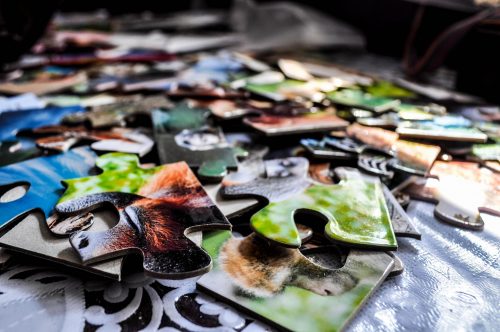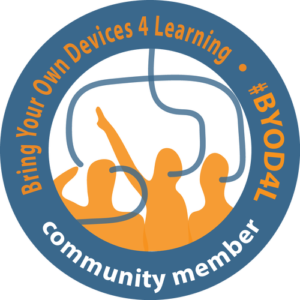Just wondering what’s body combat? Click here
I’m really looking forward to attending #OER17 next week and participating in the conversation about openness in education, particularly as there’s an emphasis on critical perspectives. The conference theme is ‘The Politics of Open’.
This couldn’t be better for me, as I’ve recently set my cap at doing a PhD study that takes a critical look at aspects of open educational practice (OEP). Although I’ve followed the event over the last few years, it’ll be the first time that I’ve attended in person. However, I don’t think I’ll feel like a total ‘newbie’ because to some extent I already feel part of the ‘open community’. Notwithstanding the fact that I’m based in IET in The Open University and four fellow PhD colleagues will be presenting, plus the entire OER Hub team, also based in IET, it’s because, as an open learner, I’ve already blogged, Tweeted and hung out with a number of individuals who are attending the conference. Plus, there’s so much pre-conference interactive engagement on social media that I’ve been introduced to even more like minded ‘open peeps’. There’s a creative media challenge, questions and hashtags and, get this, the keynote speaker, Maha Bali, has been preparing her keynote in the open through a series of blog posts, which she tantalizing pulled together in an #OpenEdSig webinar earlier this week. I strongly urge anyone to watch it as it serves as a REALLY powerful example of what it means for someone to be open ‘as a way of being’, and to engage in open, networked and participatory scholarship.
Which kind of brings me to my research interest, as well as nicely setting up this post as a contribution to the #101openstories project that launched this week. The project invites personal stories about openness, the aim of which is to
help us all get to know each other, share ideas and engage in conversations and identify opportunities to support each other and collaborate. These stories will help us learn with and from each other and grow individually AND collectively.
My open story is that I was hooked through participation in the whole cMOOC phenomenon, to which this blog stands testament. I’m wholeheartedly a product of innovative open educators who dreamed, and dared, to open up learning for all on the web, well, all like me any way 🙂 As such, I feel indebted to these educators and to the network that formed part of this experience, such that I’m interested to learn more about the Open Education and the OER movement and to advocate on its behalf. However, I must essentially be something of a skeptic because I always need to examine things critically, that is, to consider matters of power and to look for hidden assumptions. I know open education is contested, with it increasingly being seen as a response to pressures of neoliberal economics and austerity (Jones 2015). MOOcs being a case in point. Like Martin Weller (2014) says, there’s a ‘Battle for Open‘. Indeed, OER17 is a response to this.
The idea of openness as ‘a way of being’ is very appealing to me. I mean, there’s just so many people out there who seem to approach teaching and learning in this way – sharing openly and transparently as a means of democratizing knowledge. So when I recently discovered the concept of self_OER put forward by Maha Bali and Suzan Koseoglu at OER16, and its references to openness as a ‘way of being’, I was immediately intrigued, especially as they posed the question: how might the processes and products of open scholarship align/intersect with the goals of open education? It’s exactly this that I hope to take up. However, baring in mind that openness is contested, which is evident in the battle metaphor, and which, to be honest, seems to imply institutions, corporations and generally all things big and organized, I was wondering if a metaphor that specifically speaks to the individual open practitioner might be more helpful, body combat!! That’s right, a martial arts inspired mind set.
I recently started going to body combat fitness classes (no, that’s not me in the video) and I can’t help thinking that as open educators and researchers we might benefit from developing our practice, metaphorically, along these lines. Release the inner warrior to fight off the co-option of open, or ‘open washing’.
As Stephen Brookfield (1998) says, critically reflective practice
makes us more aware of those submerged and unacknowledged power dynamics that infuse all practice settings. It also helps to detect hegemonic assumptions – assumptions that we think are in our own best interests but that actually work against us in the long term (p. 197).
Open education has been critiqued for not engaging critically with aspects of power (Bayne et al., 2015; Knox, 2013), and where it has engaged, it has tended to focus on hegemonic aspects of sovereign power, and failed to take account of disciplinary aspects, or ‘technologies of the self’, whereby individuals constitute themselves within and through systems of power, which might seem natural but are either enabled or constrained by the techniques available in the associated discourse (Foucault, 1998). You can see why I’m intrigued by the the concept of the self as OER. The research I’m formulating is not to intended to expose contradictions and pull the rug from under the feet of those engaged in open education, far from it, rather it’s to suggest something akin to collective self-examination, or a SWOT analysis, one that takes account of all aspects of power. I’m interested to become a better informed open practitioner and to advance the ‘true’ goals of open education. Therefore, extending the martial arts metaphor, I see critical investigation and a body combat mindset as presenting a way of becoming a ‘black belt’ advocate for open education. What do you think?
I look forward to participating in the conversation at OER17 next week and to developing my research ideas further.
References
- Bayne, S., Knox, J. and Ross, J. (2015) ‘Open education: the need for a critical approach’, Learning, Media and Technology, vol. 40, no. 3, pp. 247–250.
- Brookfield, S. (1998) ‘Critically reflective practice’, Journal of Continuing Education in the Health Professions, vol. 18, no. 4, pp. 197–205.
-
Foucault, Michel, et al. (1988) Technologies of the self: A seminar with Michel Foucault. Univ of Massachusetts Press.
- Jones, C. (2015) ‘Openness, technologies, business models and austerity’, Learning, Media and Technology, vol. 40, no. 3, pp. 328–349.
- Knox, J. (2013) ‘Five critiques of the open educational resources movement’, Teaching in Higher Education, vol. 18, no. 8, pp. 821–832.
- Koseoglu, S. and Bali, M. (2016) ‘The Self as an Open Educational Resource [1091]’, #OER16 [Online]. Available at https://oer16.oerconf.org/sessions/the-self-as-an-open-educational-resource-1091/.
- Weller, M. (2014) Battle for Open, Ubiquity Press [Online]. Available at http://www.ubiquitypress.com/site/books/10.5334/bam/.



